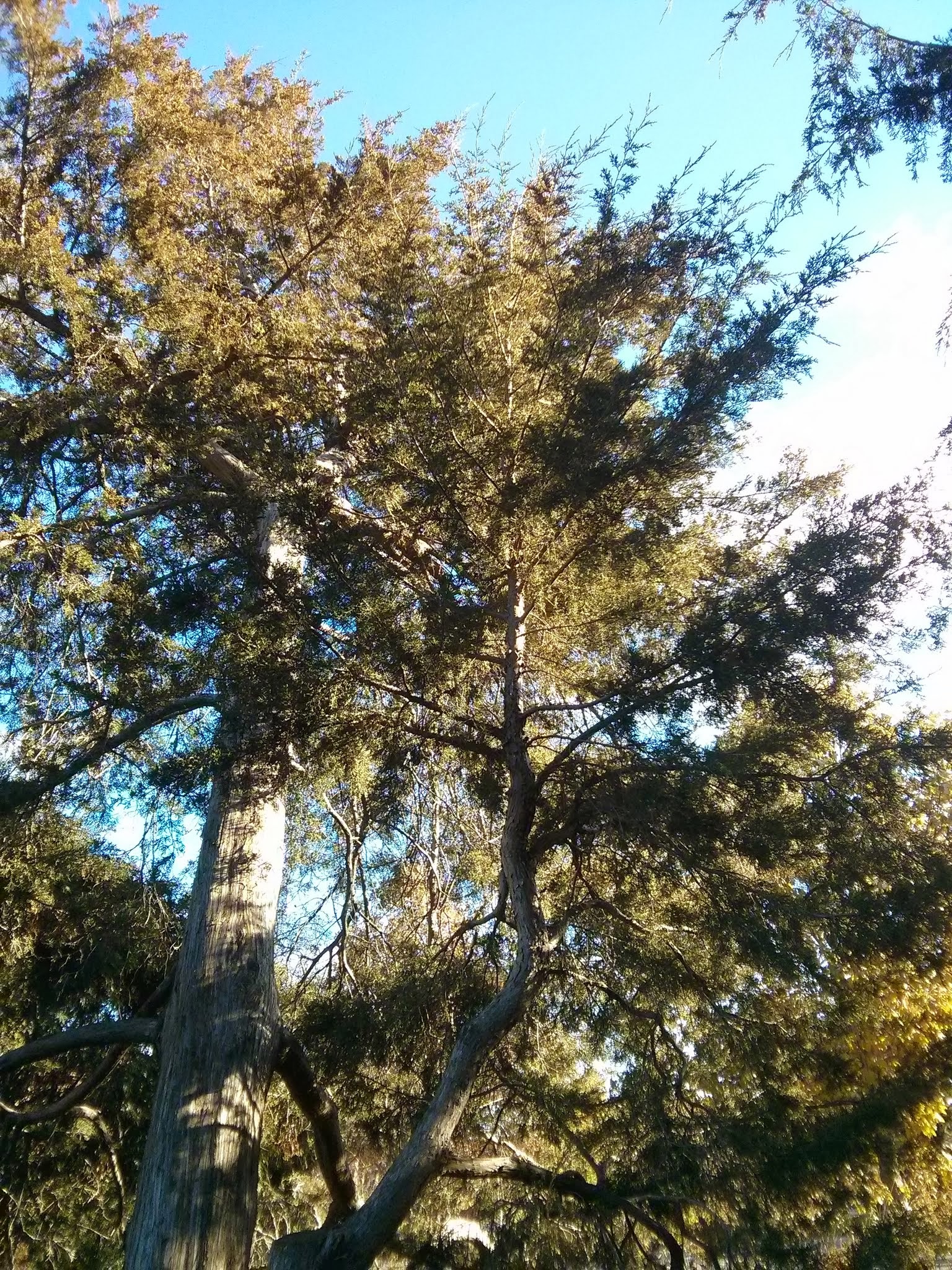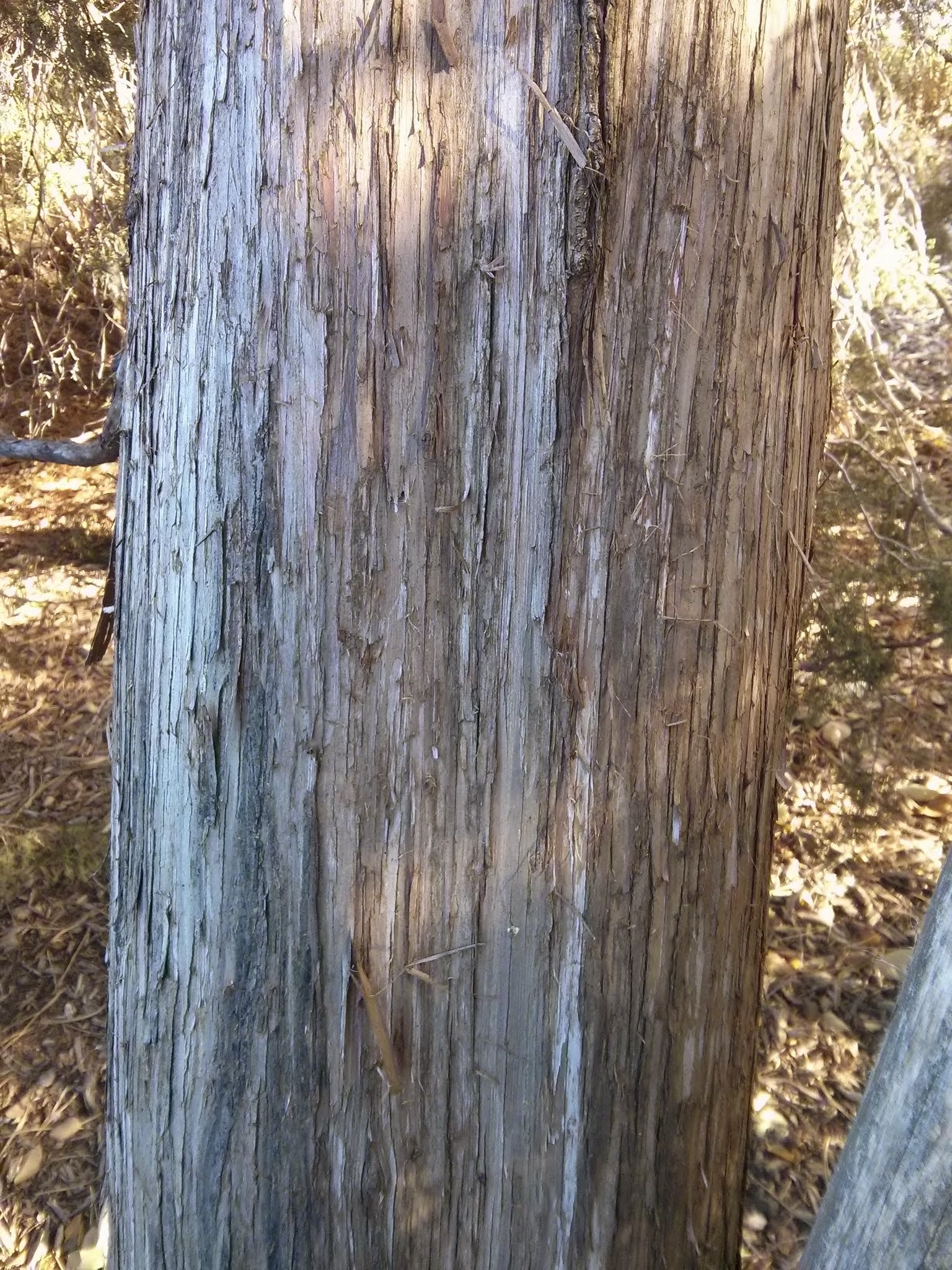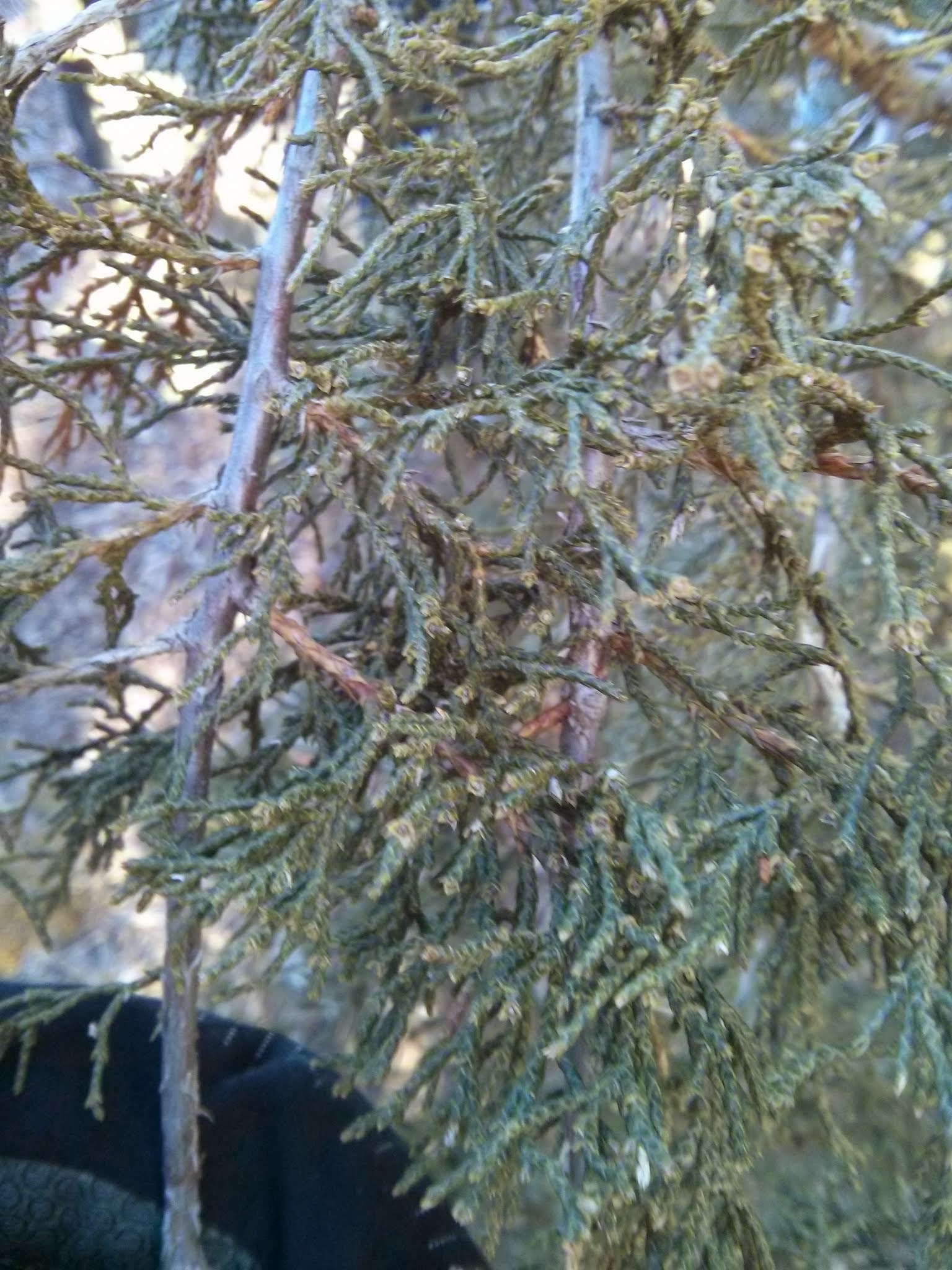Common Name: eastern redcedar
Scientific Name:
Family: Cupressaceae
Genus: Juniperus
Species: virginiana
Hardiness Zone: 2 to 9
Height: 30 to 65 ft
Width: 8 to 25 ft
Common characteristics:
The eastern redcedar has a straight trunk and a pyramidal to rounded crown shape. It can reach heights of 25' to 50' when growing in good locations. The bark is thin with a reddish-brown color, it peels off in long, vertical shred like strips. Leaves growing on this tree will often appear in two forms on the same tree, the more common form is dark green, minute, and scalelike, clasping the stem in four ranks so that the stem appears square. The second form usually appears on young growth, on vigorous shoots, or on branches in deep shade and is awl-shaped, quite sharp-pointed, spreading, and whitened underneath. Its fruit or cone is a dark blue berry-like cone with one or two seeds in a sweet flesh, it is a favorite winter food for some birds.
Where it grows:
Easily grown in alkaline soil, dry soil too moist, well-drained soils in full sun. Tolerates a wide range of soils and growing conditions, from swamps to dry rocky glades. It can tolerate dry sites that experience occasional drought, and road salts. Prefers moist soils but is intolerant of constantly wet soils. It has the best drought resistance of any conifer native to the eastern U.S.
How it’s used:
The eastern redcedar has one of the widest ranges for pH tolerance. It will perform where other trees simply will not. It can be planted for different uses: hedges, windbreak trees, or a stand-alone specimen. There are many different cultivars now available; many of these cultivars offer different colors, shapes, and sizes. The wood is used to make trunks and closets.
Notes: This species invades native grasslands and should be planted with care.
Ecosystem services:
Its fruit is often eaten by game birds, game mammals, small mammals, and songbirds.
Where it is native to:
Native to east and central North America. It is native to Minnesota predominantly in the southern half of the state. It is most abundant on river bluffs in the southeastern part of the state where few other trees are found.
Known Varieties and Their Traits:
Blue Eastern red-cedar (Juniperus virginiana 'Glauca'): Narrow, upright, columnar evergreen tree, 20 to 25 feet high and 8 to 10 feet wide. Silver-blue spring foliage turns blue-green in summer. Use as a specimen, in groups, or as an informal hedge.
Blue Mountain Eastern red-cedar (Juniperus virginiana 'Blue Mountain'): Spreading evergreen shrub, 3 to 4 feet high and 5 to 8 feet wide. Blue-green foliage is softer and more needlelike than that of most junipers. Plants of this female cultivar produce berry-shaped cones that, if pollinated, ripen to a bluish color. Use as a foundation plant, in shrub borders, or on slopes.
Burk Eastern red-cedar (Juniperus virginiana 'Burkii'): Pyramidal cultivar, 20 to 25 feet high; Good blue color with purple tones in winter; male (no fruit).
Canaert Eastern red-cedar (Juniperus virginiana 'Canaertii'): Pyramidal tree, 20 to 35 feet high and 15 to 20 feet wide. Dark green foliage tufted at ends of branches; open crown, attractive bluish-white clusters of fruit; reddish-brown bark exfoliating into long strips. Use as a specimen, in groups, or for informal screening.
Hillspire Eastern red-cedar (Juniperus virginiana 'Cupressifolia'): Pyramidal form; grows to 15 feet tall; foliage more cypress-like; female form.
Grey Owl Eastern red-cedar (Juniperus virginiana 'Grey Owl'): A low growing, spreading shrub reaching 3 to 4 feet high and 6 to 8 feet wide. Silver-grey foliage attractive all year. A female form that develops attractive blue berries.
Taylor Eastern red-cedar (Juniperus virginiana 'Taylor'): Narrow, columnar form; grows 15 to 2o feet high and 3 to 4 feet wide; silvery, blue-green foliage.
Problems:
No serious insect or disease problems. Cedar apple rust is a common problem for many different junipers. Susceptible to twig blight and scale. Watch for bagworms and mites.
References:


